Back to our Roots 2 - Cunningham country
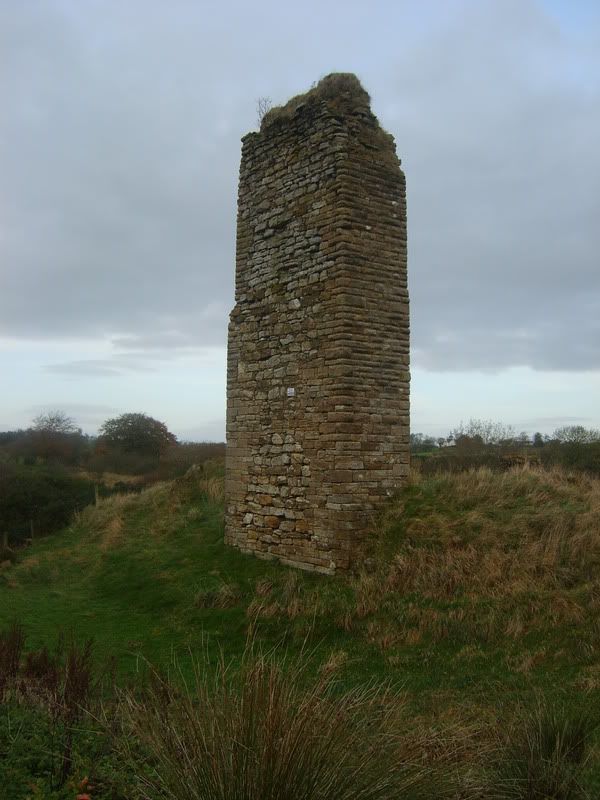
The first use of the Cunningham surname appears to have been taken by Wernibald after he was granted the property of Kilmaurs by Hugo de Morville in 1140. Sir Alexander Cunningham was made Earl of Glencairn in 1488. By then different branches of the family were establishing castles and tower houses in the area roughly comprised of the triangle formed by the villages of Stewarton, Kilmaurs and Cunningamhead, in Ayrshire. This is the last standing remains of a mediaeval Cunningham stronghold.
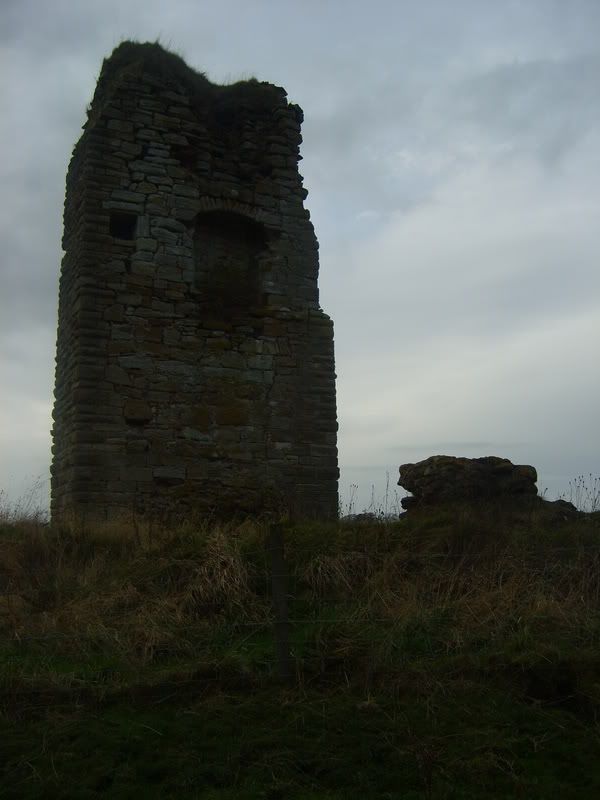
Clan Cunningham USA website captions their illustration of this property as Robertland Castle, though Wiki and the local Stewarton website confirm it as old Corsehill Castle. The confusion seems to have arisen because the Cunninghams of Robertland and of Corsehill jointly plotted the murder of Hugh Montgomery, 4th Earl of Eglinton, at Annick Ford in 1586, as part of a century old feud between the Cunninghams and the Montgomeries. Robertland Castle was burnt by the Montgomeries in revenge, while as a punishment Corsehill was forfeited to the Montgomeries. Not to be outdone Cunninghams of Corsehill built a new Corsehill castle nearby, of which nothing remains today. The original castle was later handed back to them by the Montgomeries but by now in ruinous condition. For many years the ruin was locally referred to as Ruincrag. It comprised an L-shaped tower house, most of which was removed and used for construction of the adjacent Glasgow, Barrhead and Kilmarnock Railway about 1870, leaving just this one remaining tower. Some repair work appears to have been carried out to the tower around the same time, conserving a historic feature to be viewed from passing trains.
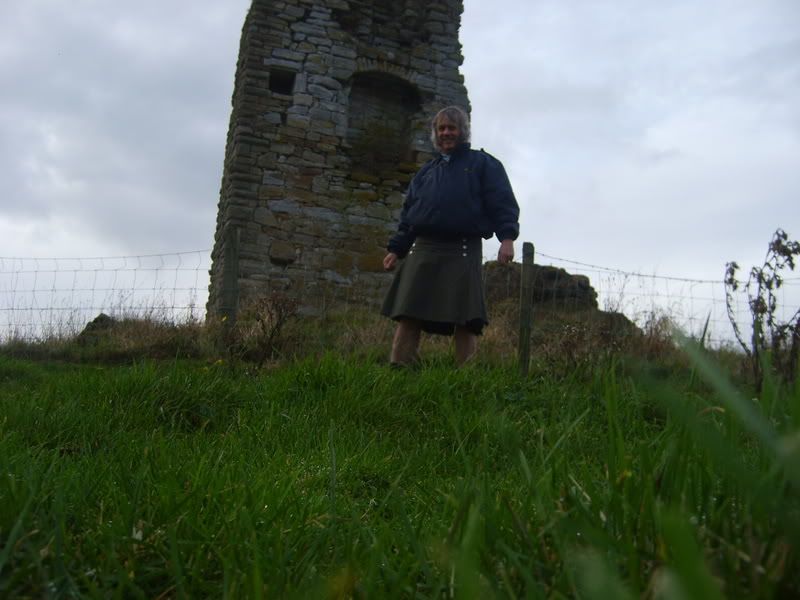
A Cunningham at a Cunningham stronghold. It would have been nice to wear my 8-yard Cunningham kilt, but the Freedom kilt was a more practical option for hiking across fields to reach the ruin.
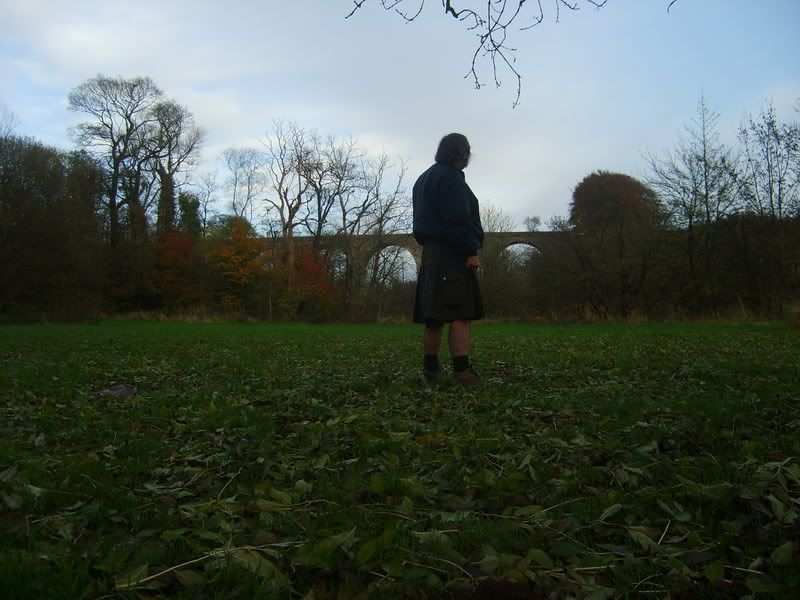
Today there is a railway viaduct near the site of Annick Ford
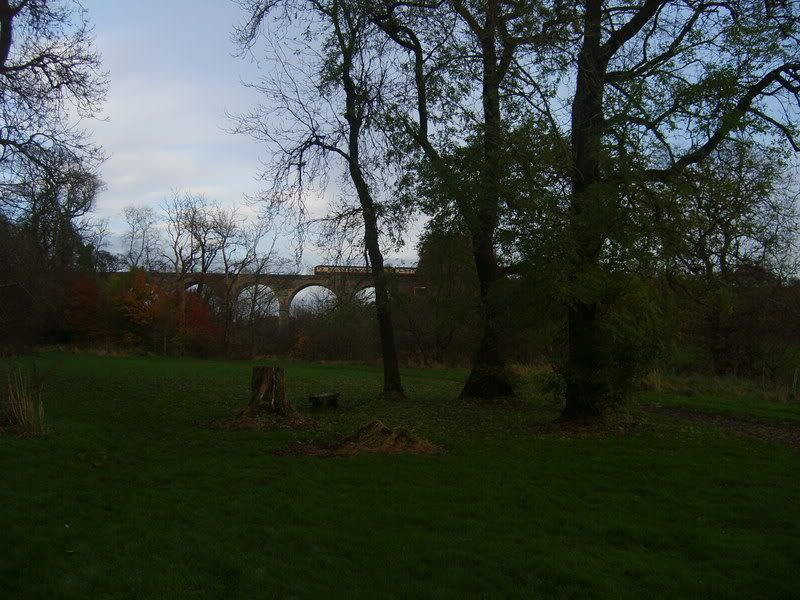
Shortly after the above photo, the viaduct came to life with the passing of the Glasgow to Kilmarnock sprinter train.
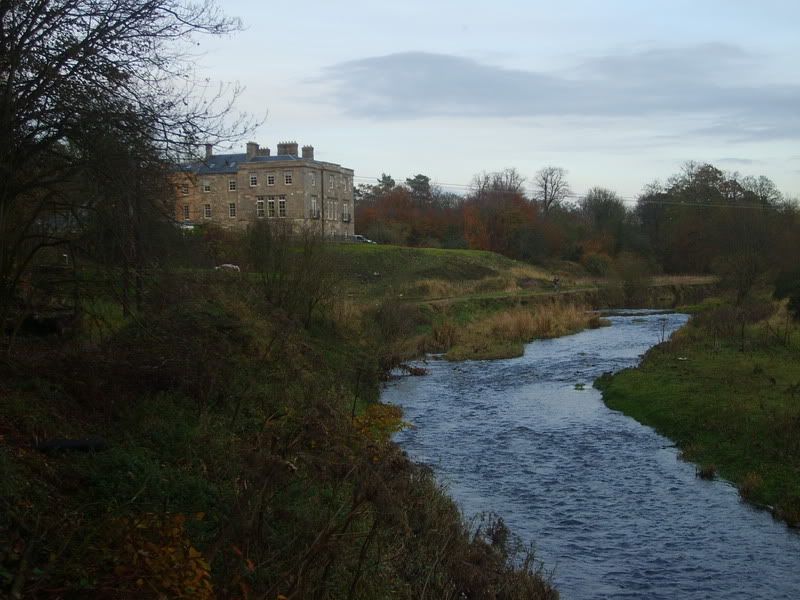
The Annick Water, and Lainshaw House, a Montgomery stronghold. It passed to Cunningham through marriage in 1767 and they substantially remodelled it in the early 1800's.

The weir on the Annick water below Lainshaw House.
Last edited by cessna152towser; 9th November 07 at 08:42 AM.
Regional Director for Scotland for Clan Cunningham International, and a Scottish Armiger.























Bookmarks